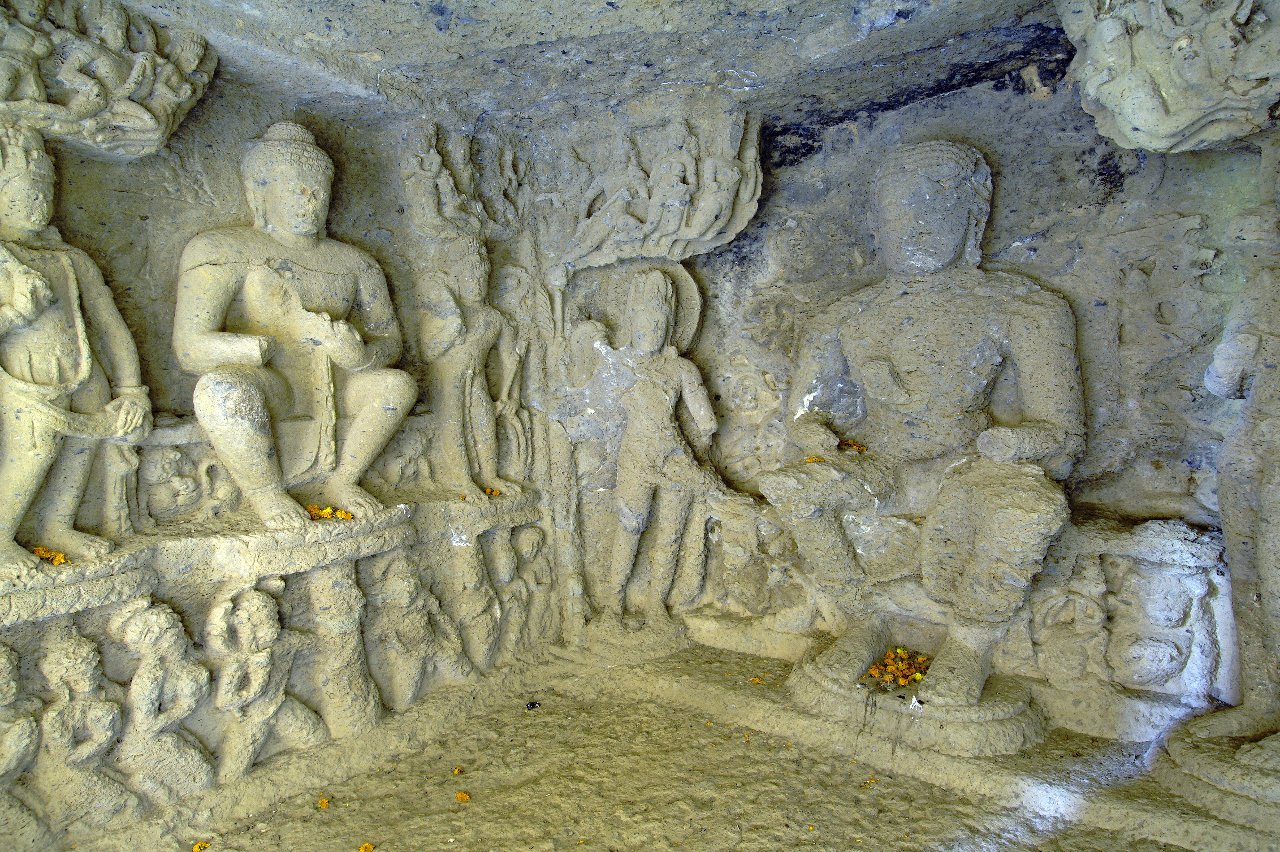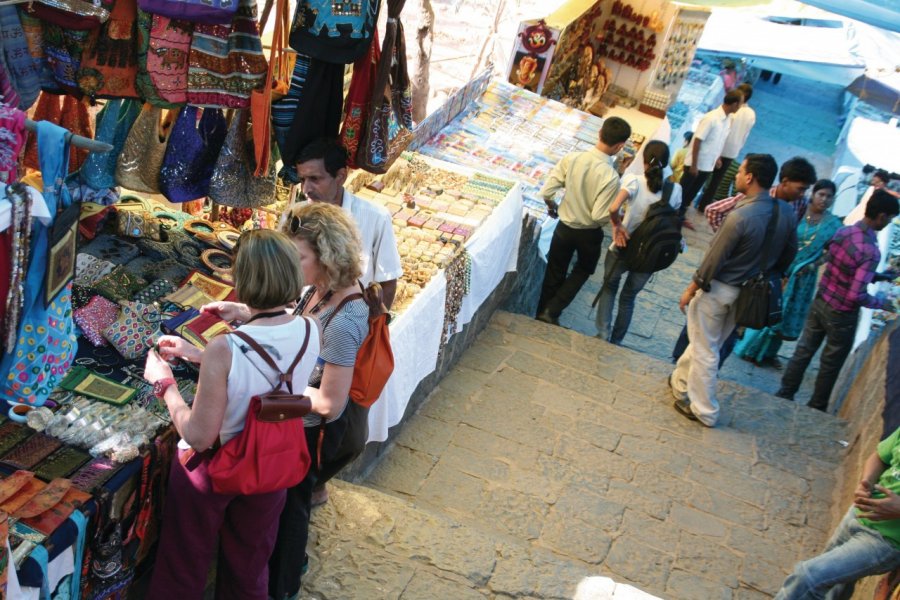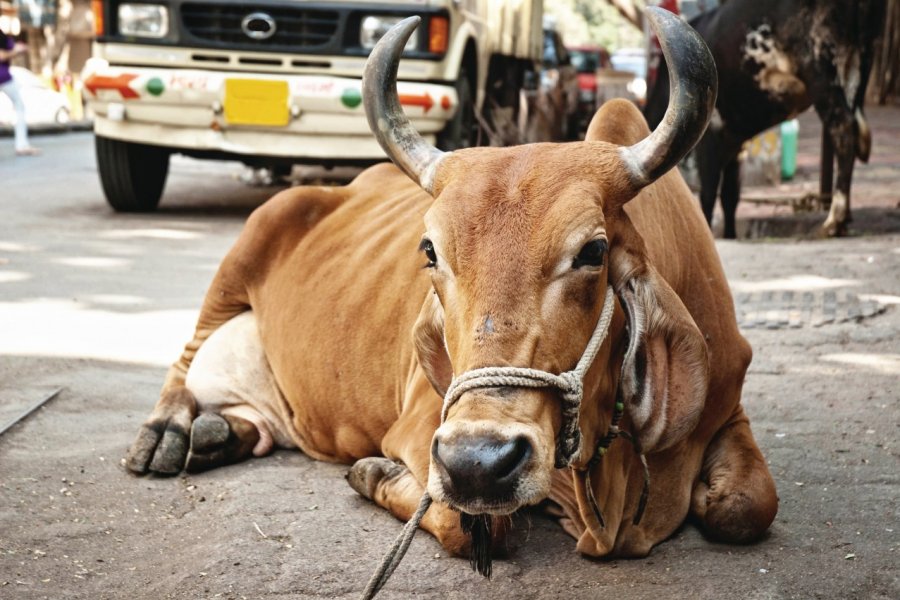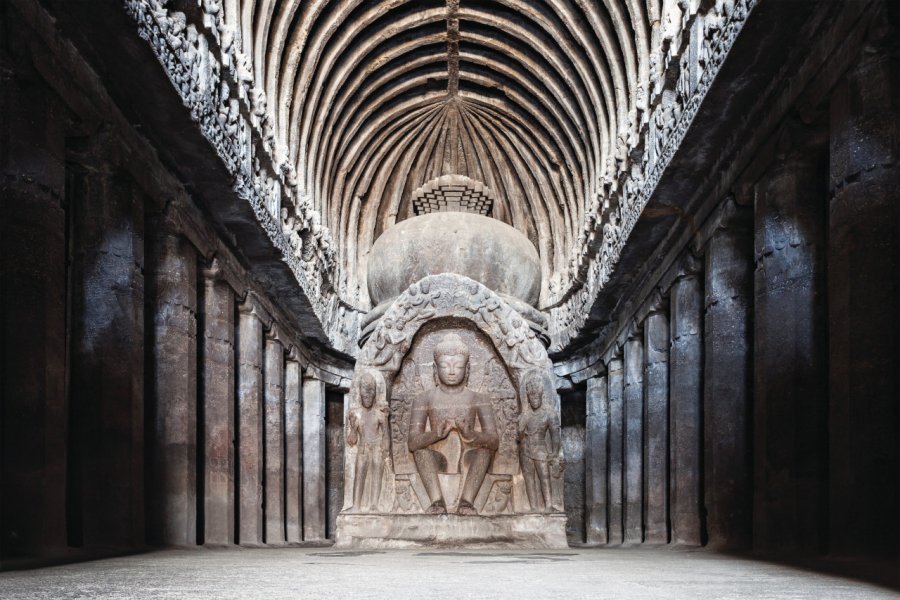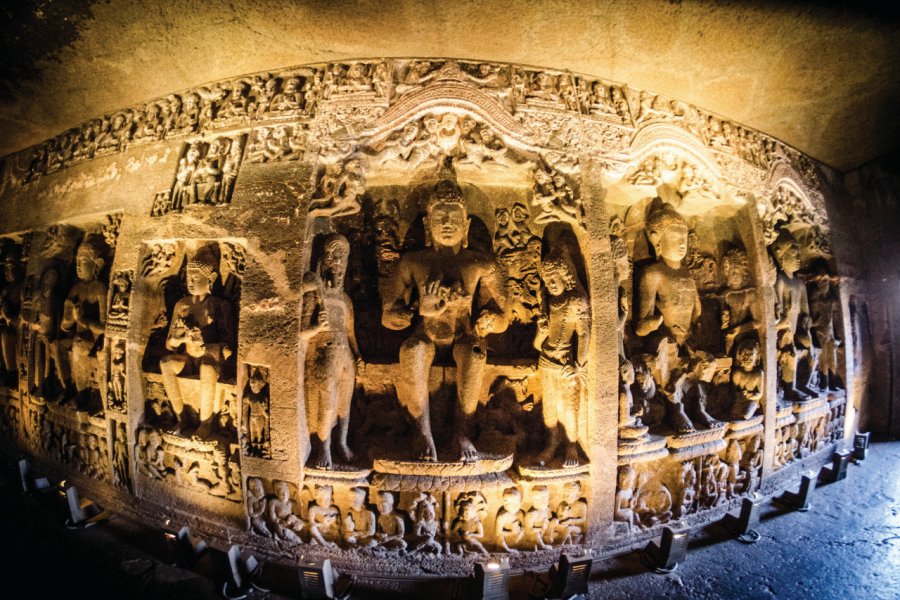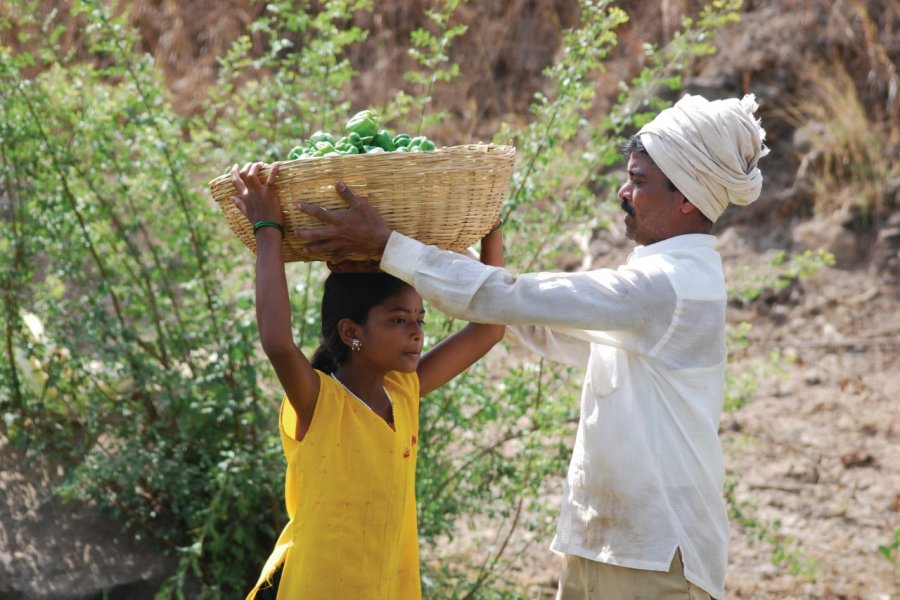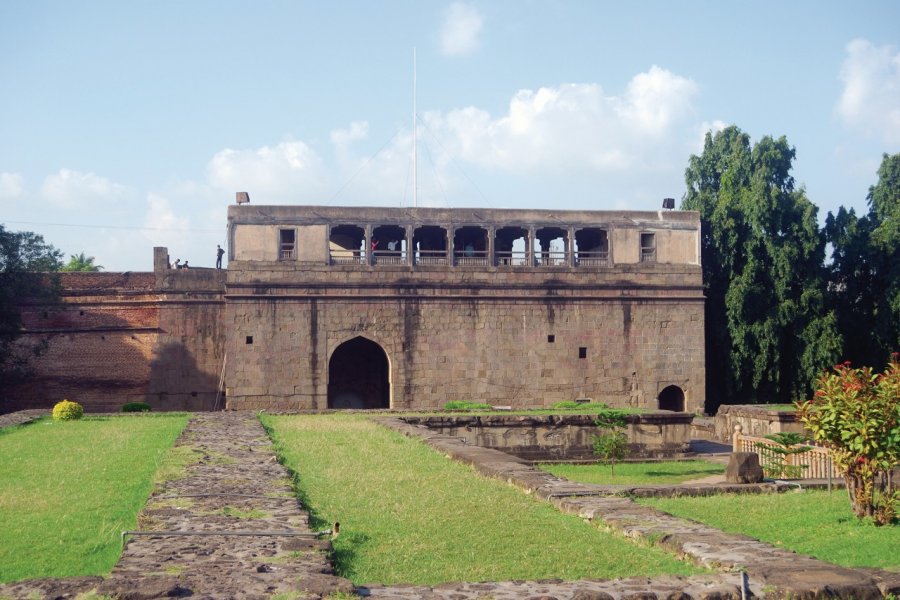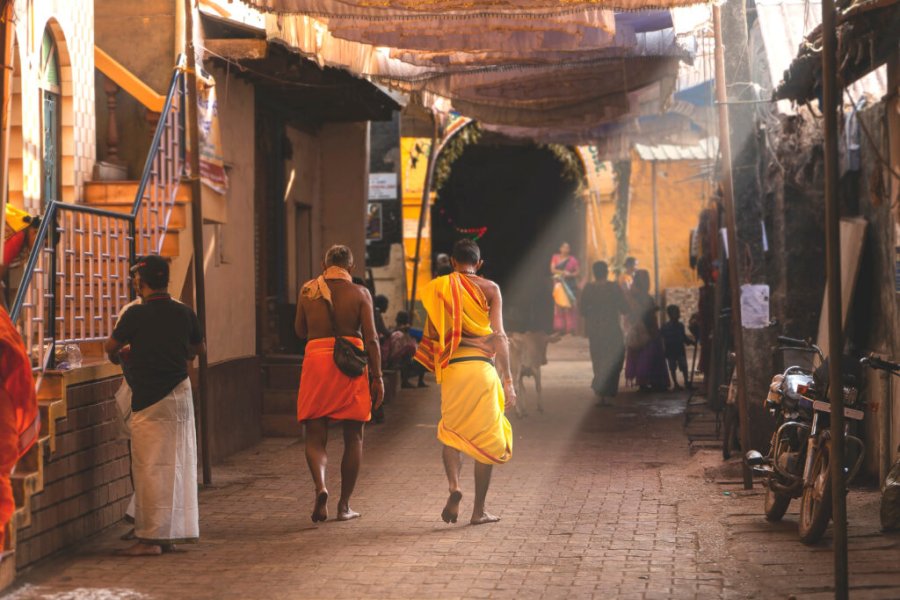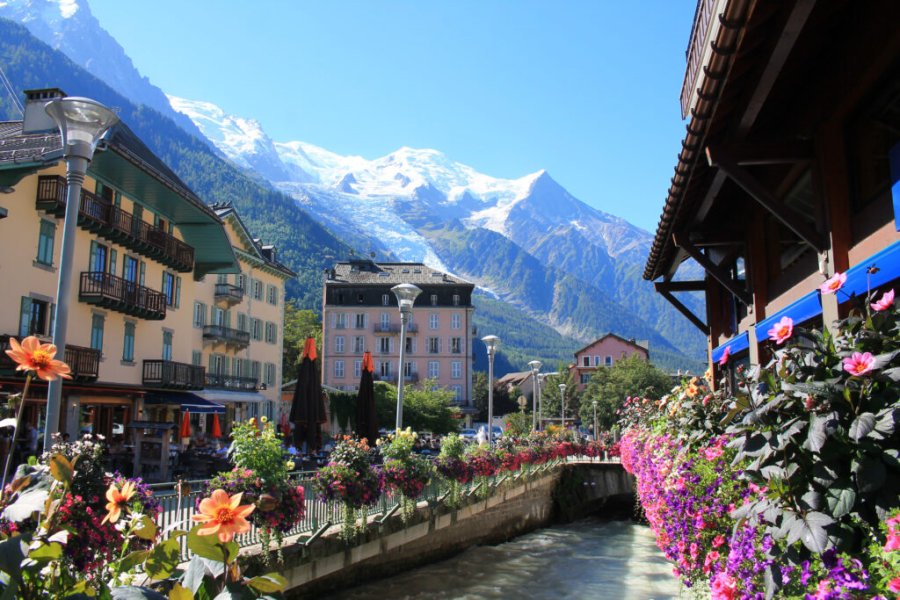Rock caves of Maharashtra
Highlights of the trip
During your stay you can enjoy the following highlights: Culture / Heritage.
Best times to go
The best time(s) to go is/are : Automne, Hiver.
Where to stay in : Mumbai ?
The map of your stay "Rock caves of Maharashtra"
Detail of the stay : Rock caves of Maharashtra
How to get there - Mumbai
Mumbai, the Elephanta caves by boat

Steps: Elephanta Island
To get to the island of Elephanta, you will have to embark on the Indian Gate, facing the Taj Palace in Colaba. Dug into a solid rock, they date from A.D. 600. and attract more visitors every year than the entire city. The cave complex is a series of places of worship, inner cells, large halls and porticos, ordered according to the superb symmetry that characterizes this type of Indian architecture and filled with exquisite sculptures of Hindu gods and goddesses. At the entrance to the caves, you can find the famous Trimurti, the venerated trinity of Elephanta: Brahma the Creator, Vishnu the Savior and Shiva the Destroyer.
Mumbai, Kanheri caves

Steps: Mumbai
They are located in the heart of the Sanjay Gandhi National Park, in the upper part of Mumbai. Contemporary of Buddhism's golden age in India, between the first century BC and the 9th century, the 109 caves of Kanheri were occupied by monks, pilgrims and itinerant traders during a millennium. Most caves are vihara, Buddhist monasteries where people meditate. The main attractions of the sites are the sculptures of the goddesses Tara and Bhrukti, the hemispheric stupa and the Chaitya cave, dated from the 4th century, with its decorative woodwork and Buddha statues. Avalokitesvara, the bodhisattva of compassion, is the most represented figure in the monastery.
Places of interest : SANJAY GANDHI NATIONAL PARK & KANHERI CAVES
Aurangabad, Ellora

Steps: Ellora
You can visit the Ellora site by bus or taxi.
The magnificent group of world heritage-listed Ellora temples-caves represents India's three dominant religions and marks the final stage of rock constructions in Western India. The harmonious coexistence of Buddhism, Hinduism and jainism illustrates in a beautiful way the fervent universality of the kings and people of the era. Ellora's monuments were mainly sponsored by the Chalukya - leaders of Rashtrakoota (7th-10th centuries). The ruling classes were governed by religious injunctions and ethical codes that required their support for the builders of the temples. The construction of religious buildings were considered to promote the conquest of temporal power as much as that of religious merit and spiritual salvation. Ellora's artists were quick to respond to their company's desires and demands. They staged their passion and feelings, their faith and sensitivity. They were inspired by Hindu mythology for their frescoes and sculptures, they transformed the rock into a cavalcade of gods and goddesses. They wisely depicted the feelings of their compositions, emotions, anger, hatreds, fury of Shiva, etc.
Aurangabad, Ajanta

Steps: Ajanta
In Ajanta, the murals illustrate the events of the life of Prince Gautama Buddha, founder of Buddhism and, in the more popular stories called Jataka, relating to the previous incarnation of Buddha. According to the ancient tradition, the Buddha performed many acts of kindness and compassion during a long series of transmigrations as a bodhisattva, before making his final birth as a sage of Sakya. Some paintings evoke the Greek and Roman compositions and proportions, some of which are later reminiscent of Chinese style. But most of them belong to a purely Indian tradition, because they are not found anywhere else. All of these monuments were built during the two distinct periods separated by a long interval of four centuries. The oldest are the products of the last centuries BC and belong to the Hinayana branch of Buddhism. The most recent belong to the second half of the second century AD., when Buddhism was divided into two movements after the 4th General Council was held under the reign of another king, Kanishka.
Pune, the Bhaja caves

Steps: Pune
You can visit the site by bus or taxi.
The Bhaja caves are located 12 km from Lonavla, in the Pune district. They are among the oldest caves discovered to date, and dating back to the 2nd century BC., in the early phase of theravada Buddhism. There are eighteen caves, many of which are decorated with beautifully carved buddhas in different postures, animals and storytelling scenes. Some, like Cave No. 12, have naves with apses containing enormous stupas. Near the last cave, a waterfall and a basin that fills up during the monsoon period.
